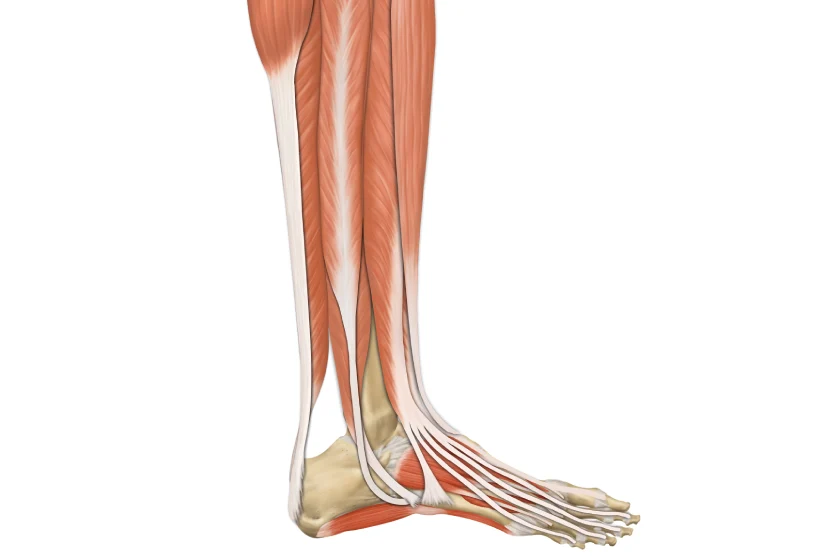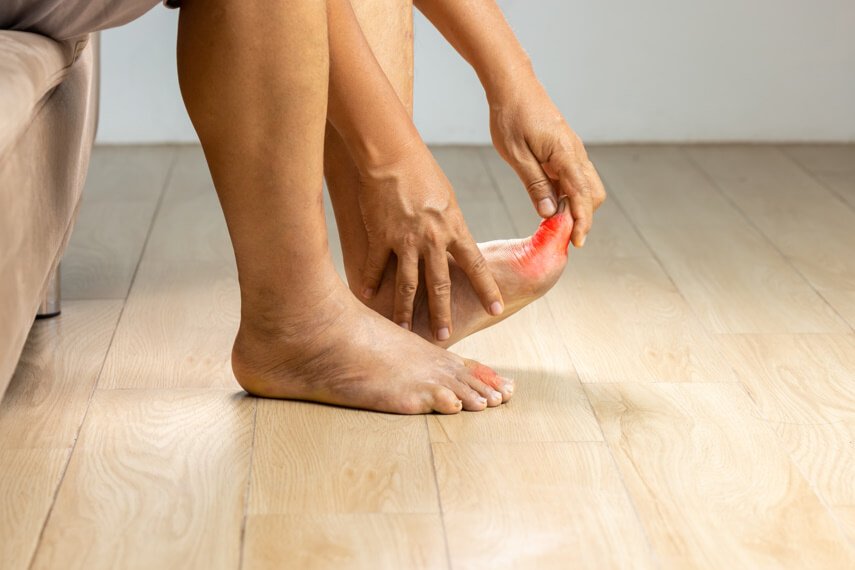What is the Difference Between Tenotomy and Tenodesis?
Understanding Tendon Procedures
Tendon injuries are common in both athletes and people with chronic conditions such as diabetes, which can lead to structural deformities in the foot. For such cases, surgical options like tenotomy and tenodesis are often recommended. These procedures help restore function, relieve pain, and prevent complications like ulcers and deformities.
At Diabetic Foot Care & Wound Care Clinic, we encounter many patients who are unsure of the difference between tenodesis versus tenotomy. Understanding these procedures, their purposes, and outcomes is essential for making informed decisions about your health.
What Is Tenotomy?
Tenotomy, is a minimally invasive surgical procedure where a tendon is deliberately cut or released to relieve tension. It’s commonly used to treat tendon contractures, muscle tightness, or deformities, especially in diabetic patients with toe deformities.
One specialised form is flexor tenotomy, which involves cutting the flexor tendon of a toe to correct claw or hammer toe deformities. This prevents pressure ulcers and improves mobility in people with diabetes.
Pros and Cons of Tenotomy:
Pros:
- Minimally invasive
- Quick procedure with local anaesthesia
- Shorter tenotomy recovery time
- Useful in preventing diabetic foot ulcers
Cons:
- Potential weakness in the released tendon
- May not be suitable for all types of tendon injuries
- Possible recurrence if the underlying cause isn’t addressed
Tenotomy recovery time is generally quick; patients often resume walking with protective footwear within a few days, and full recovery can take around 2 to 4 weeks.
What Is Tenodesis?
Tenodesis is a surgical technique in which a tendon is cut from its original attachment and reattached to bone. Unlike tenotomy, the goal here is not to release the tendon but to restore its functional length and tension. It’s typically used when tendon strength needs to be preserved or enhanced.
This procedure is more complex than tenotomy and is often used in orthopaedic or sports injury settings, such as treating biceps tendon tears or reconstructing the Achilles tendon.
Pros and Cons of Tenodesis:
Pros:
- Maintains or restores tendon strength
- Better for active individuals or athletes
- Reduces the risk of muscle weakness
Cons:
- Longer recovery period
- Involves more complex surgical techniques
- Higher cost and need for rehabilitation
Key Differences: Tenotomy vs. Tenodesis
Understanding tenodesis vs tenotomy is crucial for choosing the right approach based on your condition. Here are the key distinctions:
| Feature | Tenotomy | Tenodesis |
|---|---|---|
| Purpose | Releases tension in a tight tendon | Repositions and secures the tendon to the bone |
| Complexity | Less complex, often outpatient | More complex, may require general anaesthesia |
| Strength Preservation | May reduce tendon strength | Preserves or enhances tendon strength |
| Recovery Time | Shorter recovery time (2–4 weeks) | Longer recovery (6–12 weeks or more) |
| Ideal For | Deformities, tight tendons, diabetic ulcers | Sports injuries, tendon ruptures |
| Scarring | Minimal | Slightly more due to surgical depth |
While tenodesis versus tenotomy may seem similar, the choice depends on the specific injury, functional needs, and the patient’s overall health condition.
When Are These Procedures Recommended?
Both tenotomy and tenodesis are used in different clinical scenarios. Here’s when your doctor might recommend either:
Tenotomy is ideal for:
- Diabetic patients with claw or hammer toe deformities
- Preventing or treating non-healing pressure ulcers
- Patients who cannot undergo lengthy surgeries
- Reducing tendon tightness causing foot instabilities
Tenodesis is ideal for:
- Tendon rupture or detachment
- Chronic tendonitis that doesn’t respond to other treatments
- Athletes requiring full strength restoration
- Structural foot reconstructions or repairs
At our diabetic foot care & wound care clinic, flexor tenotomy is commonly used to relieve toe pressure, reduce the risk of ulceration, and restore normal walking posture for patients with advanced diabetic foot deformities.
Consulting a Specialist
Choosing between tenotomy vs tenodesis isn’t a decision to make lightly. A thorough evaluation by an orthopaedic specialist or a diabetic foot surgeon, is essential. At Diabetic Foot Care & Wound Care Clinic, we evaluate the patient’s medical history, imaging results, and functional goals before recommending any intervention.
Our multidisciplinary team includes wound care specialists, orthopaedic consultants, and rehabilitation therapists to ensure each patient receives comprehensive care from surgery through full recovery.
Conclusion
In summary, tenotomy and tenodesis are both valuable surgical options for treating tendon-related foot issues, but they serve different purposes. While tenotomy is simpler and ideal for diabetic foot deformities and ulcer prevention, tenodesis is a better option for restoring tendon strength in active individuals.
tendon strength in active individuals. Understanding the pros and cons of tenotomy, comparing tenodesis vs tenotomy, and knowing the tenotomy recovery time will help you make an informed decision. If you're experiencing tendon pain, toe deformities, or non-healing foot ulcers, reach out to the specialists at Surat Diabetic Foot and Ulcer Clinic for expert guidance.
FAQs
What is the main difference between tenotomy and tenodesis?
The key difference lies in the surgical goal:
- Tenotomy involves cutting or releasing a tendon to reduce tension and improve mobility.
- Tenodesis involves reattaching a tendon to bone to restore its strength and function.This distinction is critical in understanding tenodesis versus tenotomy.
What is the typical tenotomy recovery time?
Tenotomy recovery time is usually short. Patients may begin walking with protective footwear within a few days and typically heal completely within 2 to 4 weeks, especially in minimally invasive flexor tenotomy for diabetic foot deformities.
What is flexor tenotomy used for?
Flexor tenotomy is commonly used to treat claw toe or hammer toe deformities, particularly in diabetic patients. It helps relieve pressure on the toe tip, preventing ulcers and improving foot alignment.
Is tenodesis better than tenotomy?
It depends on the patient’s condition. In tenodesis vs tenotomy, tenodesis is better for preserving tendon strength and is commonly used in athletes or active individuals. Tenotomy is better suited for relieving tightness and treating deformities with minimal recovery time.
Are these procedures painful?
Both procedures are performed under local or general anaesthesia, so the surgery itself is not painful. Post-operative discomfort is manageable with pain relief and rest. Tenotomy usually has a quicker and more comfortable recovery.
Who should consider tenotomy?
Tenotomy is ideal for:
- Diabetic patients with toe deformities
- Individuals with contractures or tight tendons
- Those needing a quick, minimally invasive fix to prevent ulcers
When is tenodesis recommended?
Tenodesis is recommended when:
- A tendon needs to be reinforced or reattached (e.g., after a tear)
- Preserving strength is a priority (e.g., in athletes)
- Conservative treatments for tendon pain have failed
Does Surat Diabetic Foot and Ulcer Clinic perform both procedures?
Yes, our clinic offers both tenotomy and tenodesis, with personalised treatment plans. We specialise in flexor tenotomy for diabetic foot complications and collaborate with orthopaedic specialists for complex tenodesis cases.



.jpg)

